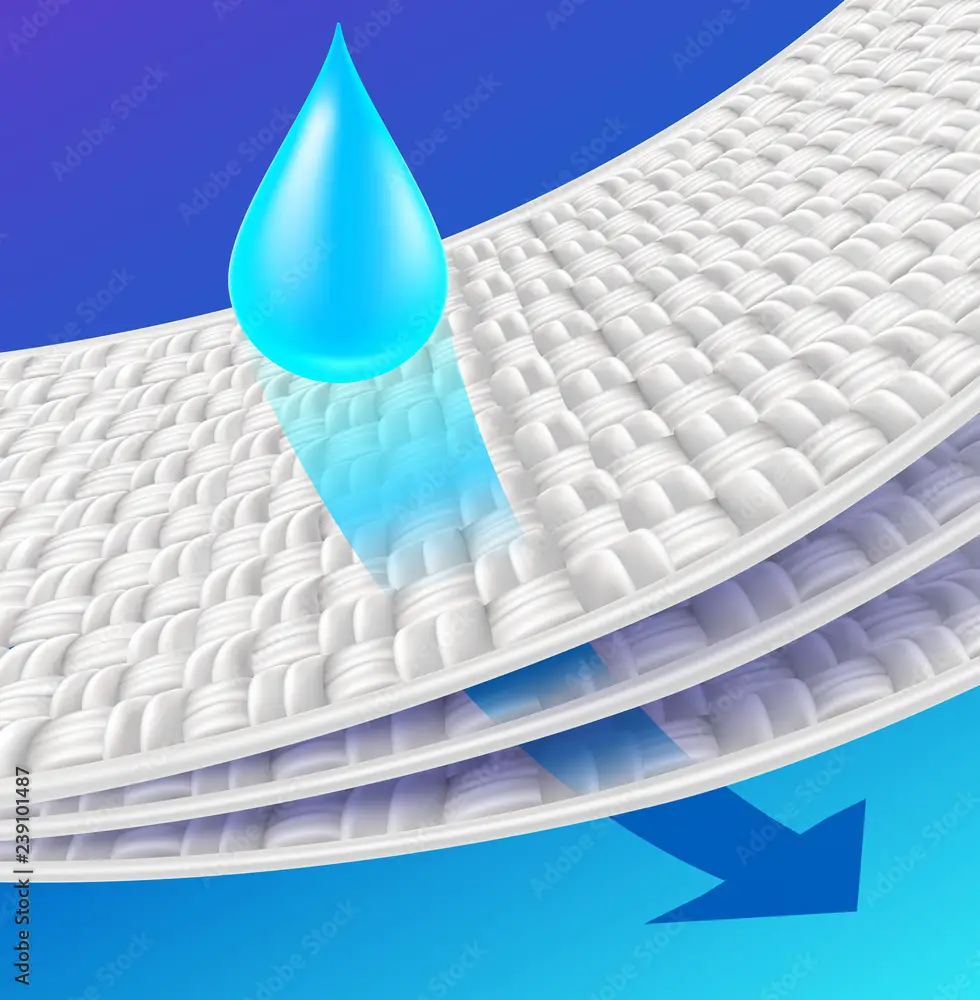Water dripping from the top of a window frame is a common issue faced by many homeowners. It can be the result of various factors, such as improper window installation, faulty seals, or extreme weather conditions. This problem, while seemingly minor, can lead to significant damages if left unaddressed.
It’s essential to understand its causes, identify early signs, and take appropriate measures to rectify it. This document will explore various aspects related to the phenomenon of water dripping from the top of a window frame.
The issue at hand, water dripping from the top of a window frame, may manifest as a persistent trickle or occasional drops of water seeping down the interior wall.
This is often most noticeable during or after rainfall, but can also occur with condensation build-up in colder weather.
Not only can it result in unsightly water stains and potential paint or wallpaper damage, but in more severe cases, persistent moisture can lead to structural damage, such as wood rot and mold growth, posing health hazards to the home’s occupants.
Causes of Water Dripping

Credit: Getty Images
Improper Sealing
One of the most common causes of water dripping from the top of a window frame is improper sealing. During the window installation process, the window and surrounding frame should be properly sealed to prevent any moisture from entering.
If this sealing process is not done correctly, or the sealant used is of poor quality or has deteriorated over time, water may find its way around the window frame, leading to the problem at hand.
Deterioration of Sealant
Over time, the sealant used during the installation process can deteriorate. This deterioration may result from exposure to harsh weather conditions, UV radiation, or simply age. As the sealant breaks down, it loses its effectiveness, creating gaps through which water can seep. This is often noticed in the form of water dripping from the top of a window frame.
Poor Quality of Sealant
The quality of the sealant also plays a crucial role in ensuring a watertight seal around the window frame. Using a low-quality sealant can result in inadequate protection against moisture intrusion.
Such sealants may not adhere well to the window frame or may degrade rapidly, leading to water seepage.
Faulty Installation
Even with a high-quality sealant, improper application during the installation process can lead to issues. If the installer does not apply the sealant evenly or misses areas, it can leave channels for water to penetrate.
Therefore, ensuring a thorough and professional window installation is imperative to prevent problems such as water dripping from the top of the window frame.
Leaking Roof

A leaking roof can also lead to water dripping from the window frame. If the roof above the window has any leaks, water can trickle down the interior walls and appear as though it is coming from the top of the window frame.
The water may be traveling along the structural elements of the wall before making its way onto the window frame. This is a serious issue that requires immediate attention as it could lead to extensive damage to the interior structure of the house.
Condensation Build-up
Condensation build-up is another common cause of water dripping from the top of a window frame. This typically occurs in colder weather when the warm air inside the house comes into contact with the cold window glass, leading to condensation.
If there is enough condensation, it can drip down the window and onto the frame, giving the appearance of a leak.
Although this issue tends to be more of a nuisance than a serious problem, if left untreated, excessive moisture can damage the window frame and surrounding wall.
Implications of Water Dripping
Water dripping from the top of a window frame, if not addressed promptly, can lead to substantial damage to both the window frame and surrounding structures.
Window Frame Damage

For the window frame itself, prolonged exposure to water can cause the material, whether it’s wood, vinyl, or metal, to deteriorate. In the case of wooden frames, the continuous presence of water can lead to wood rot.
This not only weakens the structure of the window but also creates an ideal environment for mold and mildew to thrive, which may pose health risks. Metal frames might suffer from rusting, which can compromise the structural integrity of the window.
Even robust materials like vinyl can eventually break down under persistent water exposure, leading to warping and cracking.
Surrounding Structure Damage
The surrounding structures are also at risk. The water dripping down can seep into the wall, damaging the drywall, insulation, and even the structural elements. Over time, this could lead to serious issues such as wall rot and structural instability.
As with the window frame, mold and mildew can grow in these damp conditions, presenting further health hazards.
Furthermore, if the water reaches any electrical wiring within the walls, it could trigger electrical issues, including potential fire hazards.
Potential Growth of Mold Due to Persistent Dampness
Persistent dampness from water dripping creates an optimal environment for mold growth. Mold is a type of fungus that thrives on moisture and can rapidly colonize damp surfaces.
In an environment where water is continuously dripping from a window frame, mold spores, which are naturally present in the air, can easily attach to damp surfaces and multiply.
Over time, this mold can spread from the window frame to other areas, such as the walls and ceiling, especially if these areas are also exposed to moisture. The growth of mold can be particularly rapid on porous materials such as drywall, wood, and insulation.
Mold not only causes structural damage but also poses potential health risks. Mold exposure can trigger allergic reactions in some individuals, leading to symptoms such as sneezing, skin rash, and eye irritation.
In more severe cases, exposure to certain types of mold can lead to respiratory issues.
Moreover, removing mold can be a complex process once it has taken hold. It often involves not just cleaning the affected areas, but also implementing measures to reduce moisture, thus preventing the mold from returning.
In severe cases, professional mold remediation may be required, which can be costly and disruptive.
Solutions and Preventive Measures
Temporary Solutions: Utilizing Absorptive Materials
As a short-term measure, you can utilize absorptive materials to manage the water dripping from the top of the window frame.
Materials such as towels or absorbent pads can be placed beneath the area where the water drips to catch and soak up the water, thus preventing it from causing further damage to your property.
Additionally, you can consider using containers to catch the water drips. However, these are only temporary measures and do not address the root cause of the issue.
Long-term Solutions: Resealing the Window and Improving Ventilation
For a more permanent solution, resealing the window can help prevent water from seeping through. This process involves replacing the old sealant around the window with a new, waterproof material that will effectively block the water.
Alternatively, if condensation is the cause of the dripping water, improving ventilation in the room can help to reduce the amount of moisture in the air, thus alleviating the problem. Installing a dehumidifier or an exhaust fan can aid in maintaining the right balance of humidity in the room and prevent excess condensation.
Resealing the Window
Resealing the window involves a series of steps that you must follow to ensure a watertight seal. Firstly, you should carefully remove the existing sealant using a utility knife or scraper. Once this has been successfully removed, you should clean the window frame thoroughly to remove any dust, debris, or residual sealant.
Next, you’ll need a high-quality, waterproof sealant, which you can apply along the edges of the window frame. Ensure you apply the sealant evenly and smooth it out for the best results. After application, give the sealant ample time to dry before testing its effectiveness.
Related Topics:
Tips for Prevention: Avoiding Future Occurrences
To avoid future occurrences of water dripping from the window frame, regular maintenance is key. This includes routinely checking your window seals for any signs of wear and tear, and replacing them as necessary.
Keeping the room well-ventilated to avoid excessive moisture can also help to prevent condensation.
Furthermore, during periods of heavy rain or snow, make sure to clear any accumulated water around your windows promptly to prevent it from seeping into the frame.
Moreover, To avoid future occurrences of water dripping from the window frame, regular maintenance is key. This includes routinely checking your window seals for any signs of wear and tear, and replacing them as necessary.
Keeping the room well-ventilated to avoid excessive moisture can also help to prevent condensation. Furthermore, during periods of heavy rain or snow, make sure to clear any accumulated water around your windows promptly to prevent it from seeping into the frame.
Another tip for prevention includes being vigilant about the exterior of the window. Regularly check your gutters and downpipes for blockages and ensure they are clear so water can flow away easily. Overflows can often result in water seeping into window frames.
Equally, it’s essential to check for any cracks or gaps in the exterior wall where water might infiltrate and cause the window frame to become damp. Lastly, consider using window insulation film.
This acts as a barrier, reducing cold air on the window surface, which in turn, minimizes condensation. The film is transparent, so it won’t obstruct your view and can be easily removed when no longer needed.
Implementing these preventive measures will help you tackle the issue of water dripping from the top of your window frame, ensuring a dry and comfortable home environment.
Conclusion
In summary, water dripping from the top of a window frame is more than a mere nuisance; it’s a potential danger to the structural integrity of your home and the health of its occupants. Understanding the causes, implications, and possible solutions to this issue can help you take proactive steps to protect your property.
Whether it’s through regular maintenance, improving ventilation, or investing in quality materials and proper installation, preventative measures are always better and more cost-efficient than dealing with the aftermath of water damage.
Regular inspections to identify early signs of water infiltration can also help in implementing timely corrective actions.
Always remember, a well-maintained home is not only a valuable asset, but it’s also a safe and comfortable living space for you and your loved ones.
FAQs
Why is water dripping from the top of my window frame?
Water dripping from the top of your window frame could be due to several reasons. The most common are faulty seals, poor installation, and condensation due to high humidity. Regular maintenance and inspections can help identify the cause and implement a solution.
What are the implications if water continues to drip from the top of my window frame?
If water continues to drip from the top of your window frame, it could lead to various problems. This includes damage to your window frame and wall, potential mold growth, and even structural damage to your home. It’s important to address this issue promptly to avoid more costly repairs down the line.
How can I prevent water from dripping from the top of my window frame in the future?
Regular maintenance, including checking your window seals for wear and tear, is key. Additionally, making sure your room is well-ventilated to avoid excessive humidity can prevent condensation. Clearing accumulated water from around your windows during periods of heavy rain or snow is also crucial.


2 thoughts on “Water Dripping From Top Of A Window Frame”